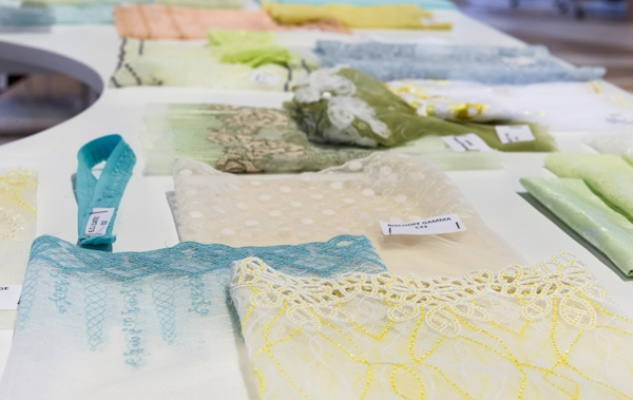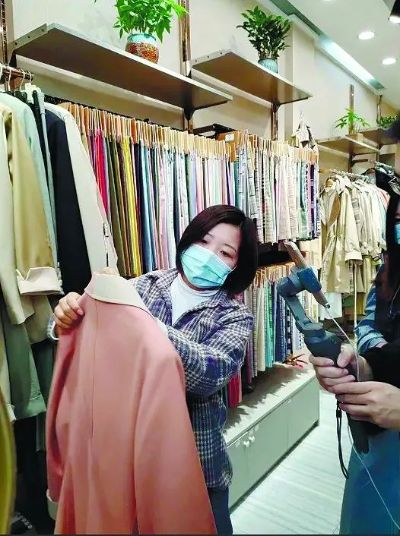The Role of Textile Testing in Quality Control
In the realm of quality control, textile testing stands as a critical component that ensures the end product meets industry standards. This process involves the application of various techniques, including mechanical tests, chemical analyses, and visual inspections, to evaluate the properties of textile materials such as strength, durability, and colorfastness. By conducting these tests, manufacturers can identify potential defects or flaws in raw materials, ensuring that only high-quality products reach the market. The results of these tests are instrumental in informing production decisions, streamlining processes, and ultimately driving cost savings and customer satisfaction. As technology continues to advance, the precision and accuracy of textile testing methods are improving, making it easier to detect even the most subtle variations in material properties. In summary, textile testing plays a vital role in quality control, providing manufacturers with the data necessary to produce products that meet or exceed customer expectations.
Introduction: Textile testing is an essential part of the quality control process that ensures the safety, durability, and aesthetic appeal of products made from textile materials. It involves conducting tests on raw materials, finished products, and even the manufacturing processes to ensure compliance with industry standards and consumer expectations. In this article, we will explore the various responsibilities of textile testing professionals and provide examples to illustrate their importance.
Responsibilities of Textile Testing Professionals:
-
Pre-Production Testing:

- Conduct initial tests on raw materials such as yarns, fabrics, and dyes to check for defects, color uniformity, and other quality issues.
- Analyze chemical composition and physical properties of raw materials to ensure they meet the required standards.
- Validate the suitability of raw materials for subsequent processing steps.
-
Production Process Testing:
- Monitor the progress of the manufacturing process to identify any deviations from established protocols.
- Conduct regular inspections and sampling to ensure product consistency and quality throughout the process.
- Analyze the results of production tests to make necessary adjustments to improve efficiency and reduce costs.
-
Post-Production Testing:
- Conduct final inspections on finished products to verify compliance with specifications, including dimensions, weight, and color accuracy.
- Evaluate the performance of finished products under different conditions, such as temperature, humidity, and wear and tear.
- Ensure that finished products meet customer requirements and regulatory standards.
-
Quality Auditing:
- Conduct periodic audits to evaluate the effectiveness of the testing process and identify areas for improvement.
- Collaborate with other departments to develop and implement strategies to address quality issues.
- Report findings to management and stakeholders to inform decision-making and prevent future problems.
-
Research and Development:
- Investigate new testing methods and techniques to improve product quality and reduce costs.
- Contribute to the development of new materials and technologies that enhance textile performance.
- Stay up-to-date with industry trends and advancements in testing equipment and software.
Examples:
-
Raw Material Testing:
- A textile company may conduct a test on a new yarn blend to ensure it meets the required specifications for strength, flexibility, and resistance to pilling.
- If the test results are not satisfactory, the company may need to adjust the production process or select a different raw material.
-
Production Process Testing:
- During the manufacture of a high-end sportswear brand, the company may use sensors to monitor the temperature, pressure, and tension during knitting and weaving processes.
- This data can be used to optimize the production cycle and reduce waste, leading to cost savings and improved product quality.
-
Post-Production Testing:
- After producing a batch of shirts, the company may send samples to a third-party laboratory for color accuracy testing.
- If the color does not meet the target shade, the company may need to rework the pattern or adjust the dyeing process.
-
Quality Auditing:
- A textile manufacturer may conduct an audit to evaluate the effectiveness of its quality control system.
- The audit may involve reviewing records, inspecting finished products, and interviewing employees to identify areas for improvement.
- Based on the findings, the company may implement changes to its testing protocols or seek external training for its staff.
-
Research and Development:
- A textile research firm may investigate the effects of using recycled polyester fibers on the performance of athletic wear.
- By conducting experiments and analyzing data, the firm may determine if the recycled fibers offer any advantages over traditional materials.
- The findings could lead to new product lines or recommendations for suppliers and manufacturers.
Conclusion: Textile testing plays a crucial role in ensuring the quality and reliability of textile products. From pre-production testing to post-production inspections, testing professionals must stay vigilant and proactive in identifying and addressing any quality issues that arise. By collaborating with other departments and staying up-to-date with industry trends, testing professionals can contribute to the overall success of a textile company and meet the needs of consumers and regulatory bodies alike.
纺织品检测职责概述
纺织品检测是确保纺织品质量的重要环节,其主要职责包括但不限于以下几个方面:
纺织品质量标准制定与执行

负责制定并执行纺织品质量标准,确保产品符合相关国家和行业标准。
原材料检验
对原材料进行严格检验,确保原材料质量符合要求,包括但不限于纤维含量、化学成分、微生物等指标的检测。
产品性能检测
对纺织品进行性能测试,包括耐热性、耐摩擦性、吸湿性、透气性等指标,确保产品符合设计要求和使用标准。
安全性检测
对纺织品进行安全性检测,确保产品不含有害物质,符合相关安全标准。
数据记录与分析
对检测数据进行记录与分析,为产品质量改进和产品优化提供依据。
具体检测职责详解
制定纺织品质量标准与检测流程
a. 根据国家和行业标准,制定纺织品质量标准。
b. 制定详细的纺织品检测流程,包括样品采集、检验方法、检验标准等。
原材料检验
a. 对原材料进行取样和检验,确保原材料质量符合要求。

b. 使用专业仪器和设备进行检验,如纤维含量测定仪、化学成分分析仪等。
c. 对原材料进行微生物检测,确保无有害微生物污染。
产品性能检测
a. 对纺织品进行性能测试,包括耐热性测试、耐摩擦性测试、吸湿性测试、透气性测试等。
b. 使用专业的测试仪器和设备进行测试,如热阻测试仪、摩擦系数测试仪等。
c. 根据测试结果,对产品性能进行评价和报告。
安全性检测
a. 对纺织品进行安全性能检测,确保产品不含有害物质。
b. 使用专业的安全性能检测仪器和设备进行检测。
c. 根据检测结果,出具纺织品安全性能检测报告。
案例说明:纺织品检测实践案例
以纺织品检测实践为例,以下是具体的案例说明:
某公司近期生产的一款新型面料,其质量标准为符合国家相关行业标准,同时需满足用户的使用需求,为此,该公司委托了一家专业的纺织品检测机构进行检测,该检测机构在接到任务后,首先制定了详细的纺织品质量标准和检测流程,然后对原材料进行了严格的检验,在产品性能检测方面,该机构使用专业的测试仪器和设备进行了耐热性、吸湿性等指标的测试,该机构出具了详细的纺织品安全性能检测报告,确保了产品的质量和安全性,通过此次检测,该公司成功提高了产品的质量和用户满意度。
纺织品检测是确保纺织品质量的重要环节,其职责包括制定和执行纺织品质量标准、原材料检验、产品性能检测以及安全性检测等方面,在实际操作中,需要严格按照相关标准和流程进行操作,以确保检测结果的准确性和可靠性。
Articles related to the knowledge points of this article:
Navigating the World of Fashion Textiles:A Comprehensive Process Map



